Chanko Nabe is one of the classic Japanese hot pot recipes! It’s filled with a lot of vegetables and proteins such as fish and meat in a rich dashi broth. This is the best dish you could eat when it’s cold in the winter time!
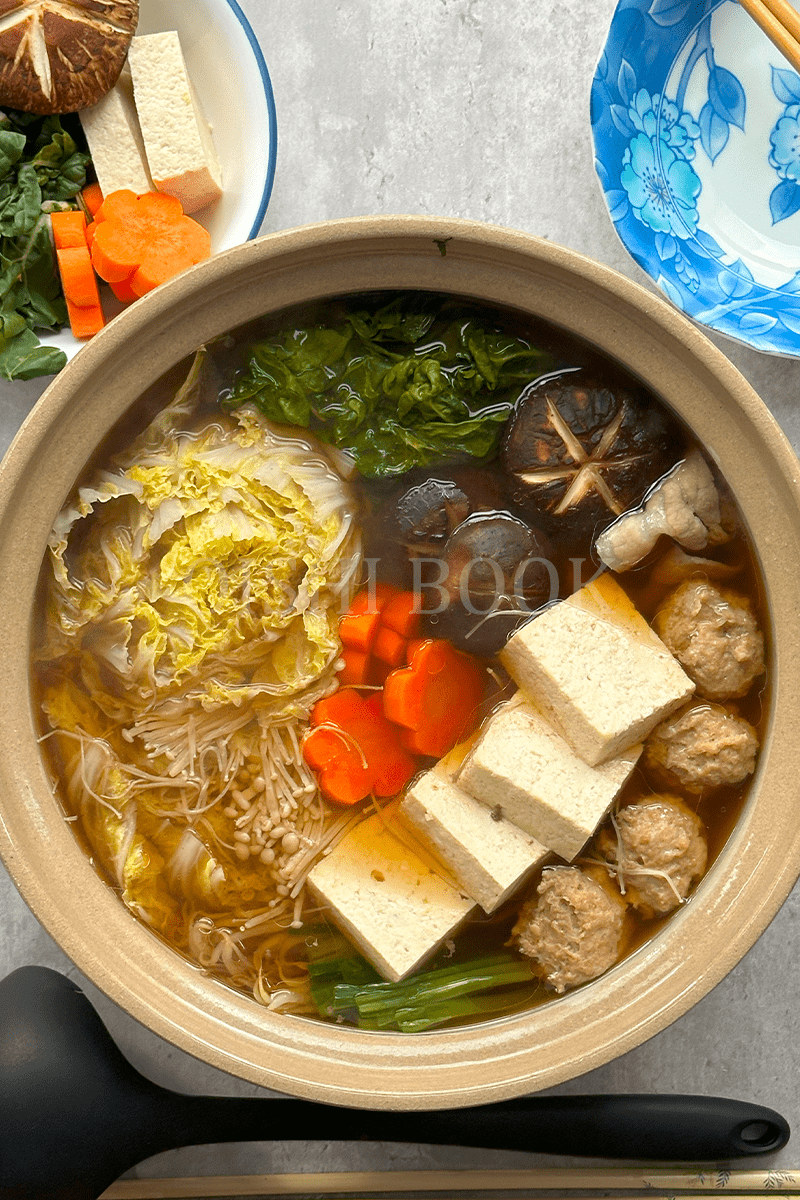
When winter comes, the first food I think about is always Nabe. Nabe is such a great Japanese stew that makes you warm and cozy. At the same time, you can eat a lot of vegetables at once. It fills you up so good!
What is Nabe (Nabemono)?
Before I explain anything, let’s talk about Nabe. Nabe is a Japanese cuisine which is similar to stew or soup.
Nabe entered Japanese life in the Jomon period which is between 13000 ~ 2300 years ago when we mostly used Doki (ancient Japanese pottery) to cook any food. We used Doki and cooked food in order to get a lot of nutrition from vegetables that are hard to eat raw. In that time, ‘Nabe’ was served individually.
Now Nabe is usually served in a larger pot in more of a family style. This style was established in the Edo- Meiji period when Shippoku food became popular. Shippoku food is Nagasaki’s local cuisine which is known for serving food in a large bowl, pot, or plate, and putting it in the middle of the table. Then you can serve yourself and take how much you want. It is told that this style came from China and was integrated into Japanese culture.
Q&A : What is Chanko Nabe?
Ok, this article is about Chanko Nabe, so let’s finally talk about it!
Chanko Nabe is one of the classic styles of Nabe and well known in Japan. It is eaten by sumo wrestlers and served in massive quantities. Chanko is a term to categorize the foods that sumo wrestlers cook. So for example, if a sumo wrestler makes curry, it is a type of Chanko. So Chanko Nabe could also be considered sumo wrestler hot pot.
If you have ever searched for Chanko Nabe recipes, I bet every recipe you have seen has different ingredients. It is a feature of Chanko Nabe. There is no exact rule for what needs to be included in Chanko Nabe. Almost anything, meat, seafood, and vegetables, can be in it. Unlike other Nabe which use dashi, kimchi, or soy based soups; Chanko Nabe’s soup base is chicken stock. After you cook with a lot of ingredients in chicken stock, the soup gets a rich and deep flavor.
Q&A : What is the Difference between Nabe and Hot Pot
There is no difference between Hot pot and Nabe. Nabe can be simply translated as hot pot in English.
The Ingredients for Chanko Nabe
As I mentioned, Chanko Nabe uses a chicken base soup. But, I use a torigara soup base in this recipe.
For the other ingredients, you can throw anything into the pot! I will share some ideas but if you don’t have everything or if you want to try something different you should!
Ingredient Ideas
- Onion
- Carrot
- firm tofu
- Salmon
- Beef
- Chicken
- Cabbage
- Chicken
- Shrimp
- Udon
- Konnyaku
- Sausages
- Mushrooms
You can add your leftover vegetables or meat in a pot and your Nabe will still turn out amazing!
Similar Recipes to Chanko Nabe on Oishi Book
- Nikujaga ( 肉じゃが – Japanese Beef and Potato soup)
- Cream Stew Recipe ( クリームシチュー – Japanese white Stew )
- Kyabetsu Roll Recipe ( ロールキャベツ – Japanese Stuffed Cabbage Rolls)
CHECK Stay in touch with me on Instagram and Pinterest to get the latest recipes! DM or comment me on Instagram if you have any questions or feedback!
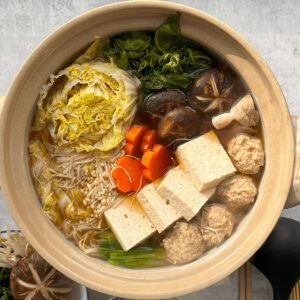
Chanko Nabe (Japanese hot pot)
Equipment
- Nabe Pot HERE is to buy nabe pot
Ingredients
Soup Ingredients
My picks (or pick your favorite ingredients)
- thinly sliced pork
- Shiitake
- Enoki mushroom
- scallion
- bean sprouts
- baby bokchoy
- napa cabbage
- firm tofu
- carrot
Instructions
1. Ingredients
- Cut everything into a size you can eat easily. I usually cut something hard to cook into a smaller size. But there is no rule here!
2. To make chicken meatballs (Tsukune)
- Use a medium bowl, add ground chicken and knead until it gets sticky.
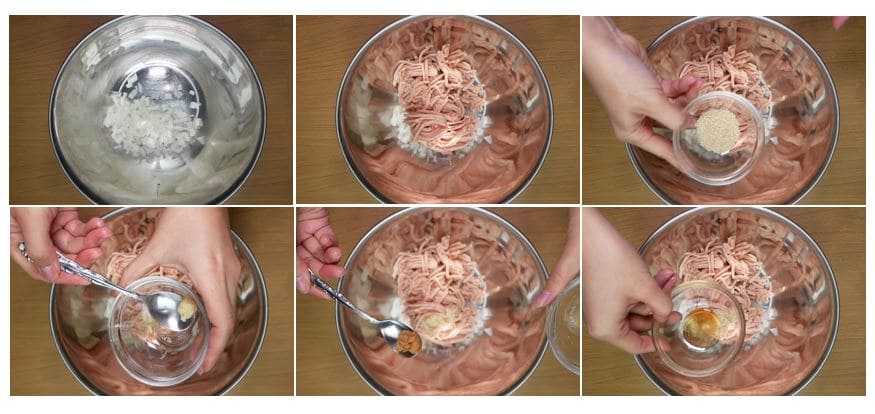
- Add all the ingredients (miso, sake, mirin, soy sauce, salt) to the bowl. Mix everything well.
- After mixing well, divide into about 8 portions and shape the balls with your hands or spoon.
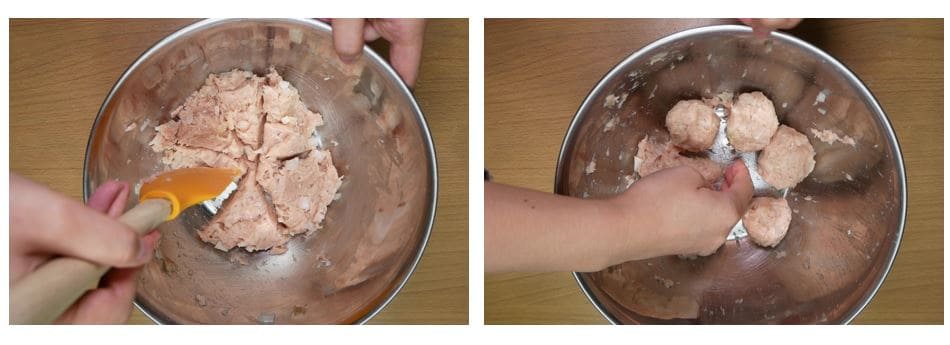
3. To make the soup
- Use a hot pot and turn the heat to medium. Add water, mirin, sake, soy sauce, torigara soup base, and sugar. Stir well.
- Bring to a boil once, then turn the heat to medium-low.
4. Let's make Chanko Nabe
- Add the meatballs and thinly sliced pork to the hot pot. And add any ingredients that need time to cook 5-8 minutes before you add any ingredients that cook quickly.*Vegetables or tofu cook more quickly than the meatballs, seafood, and other meats.
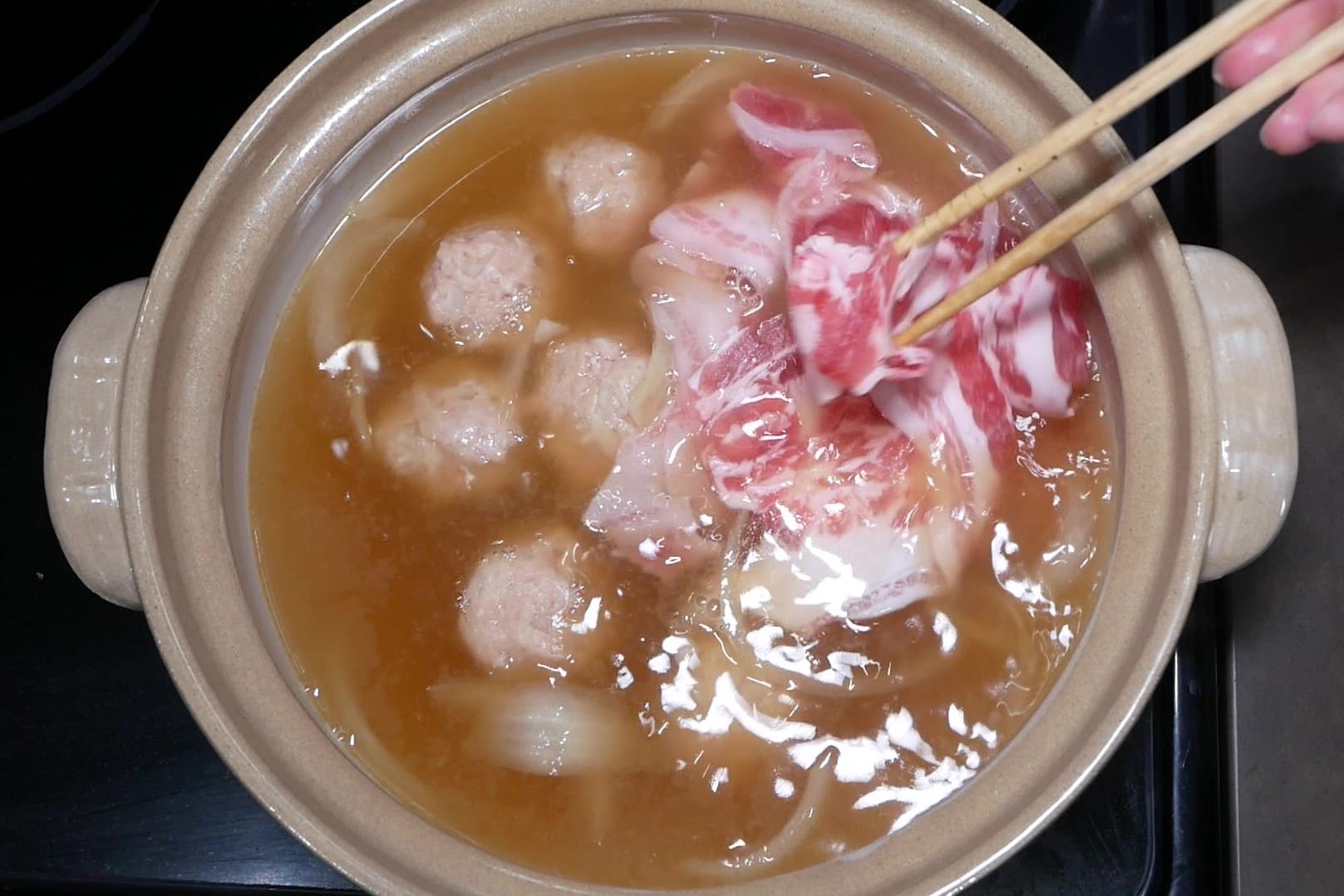
- In order to cook well, use a lid.
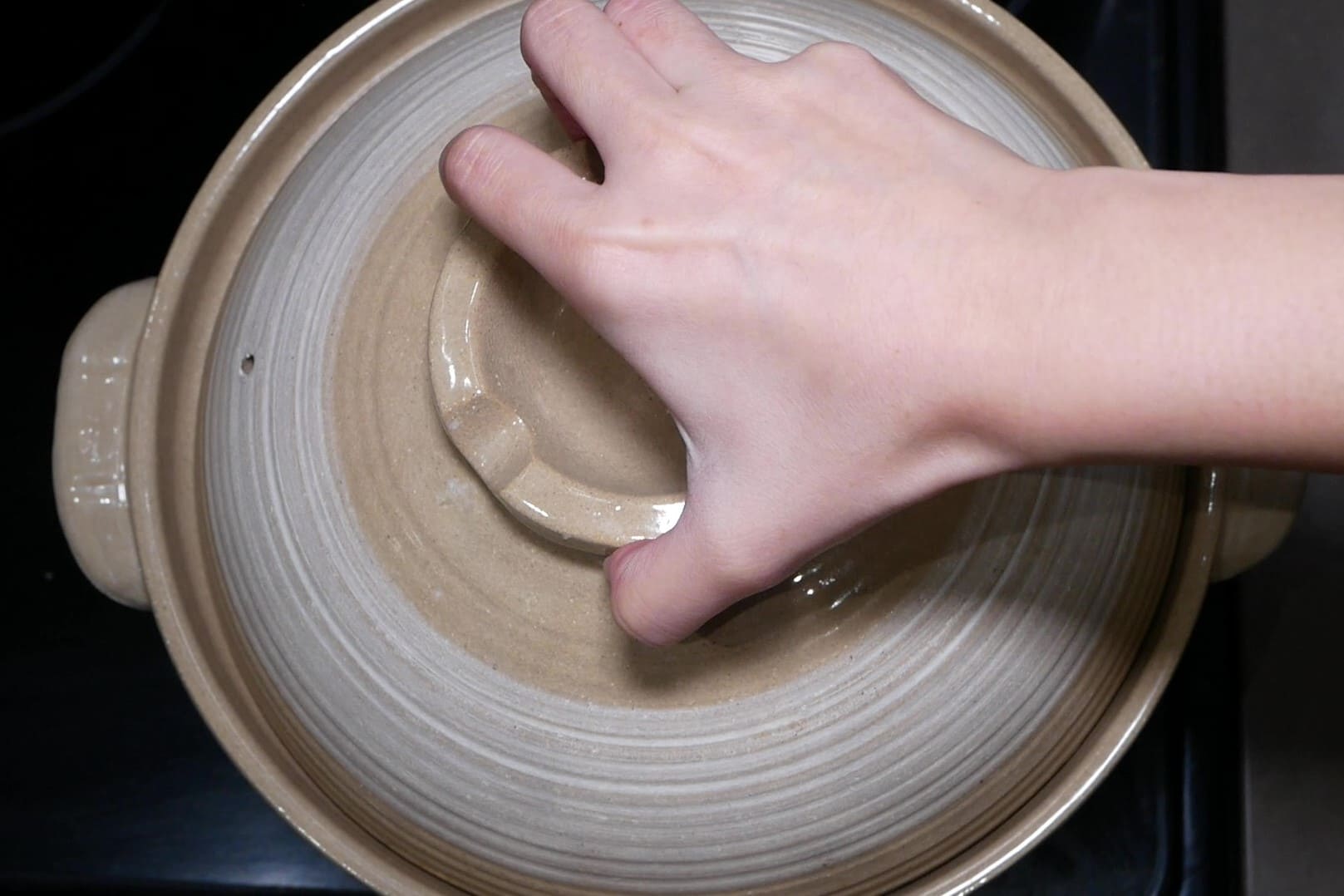
- After 5-8 minutes, open the lid and then use a fine-mesh skimmer to get rid of any fat and foam.
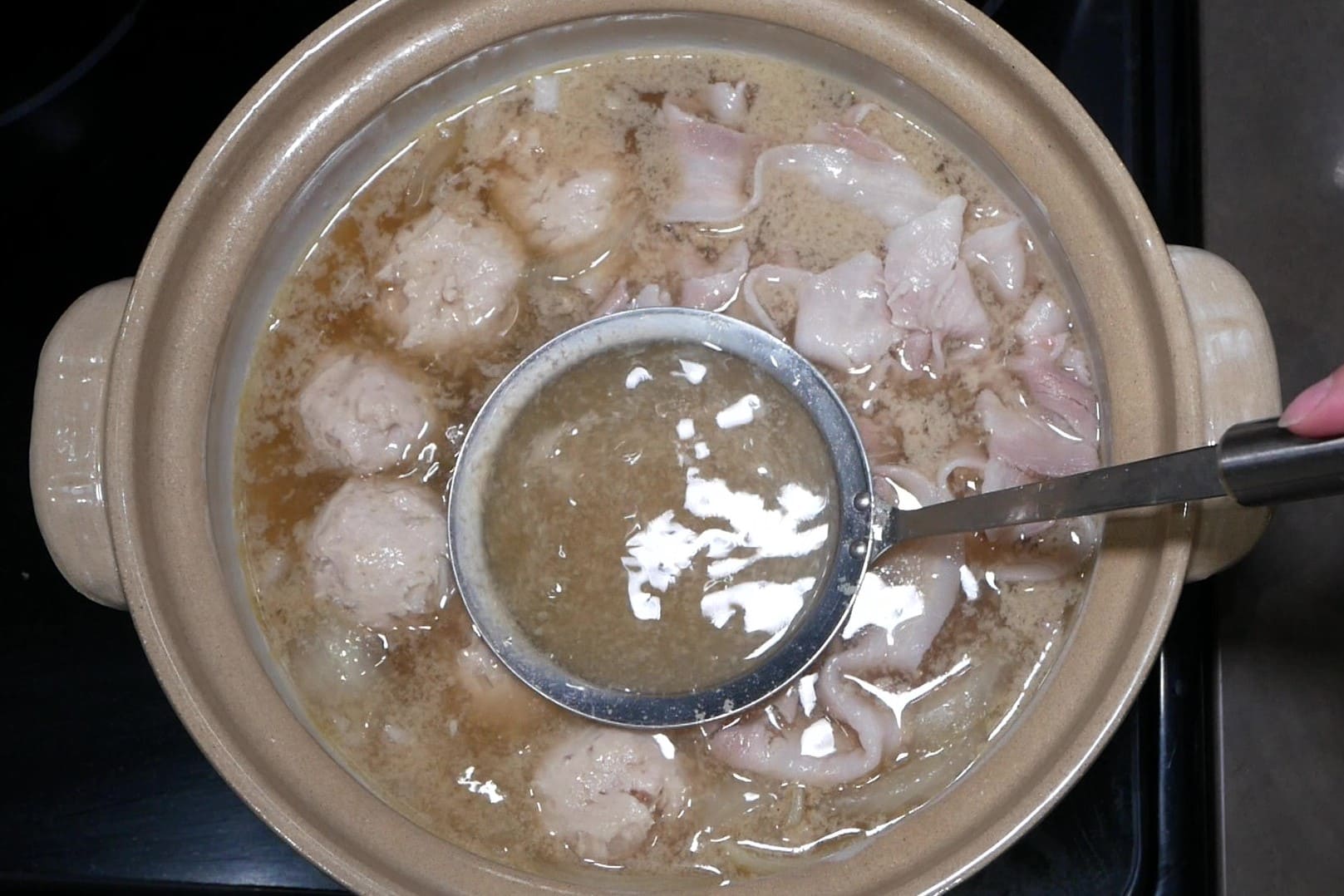
- Add the remaining ingredients (such as Shiitake, Enoki mushroom, scallion, bean sprouts, baby bokchoy, napa cabbage, carrot and tofu). If you can't fit everything at once, you can always add more after your initial serving.
- Put the lid back on and cook for 13 minutes. *1
Let's eat!
- We usually serve by putting the hot pot in the middle of the table and having everyone serve themselves.
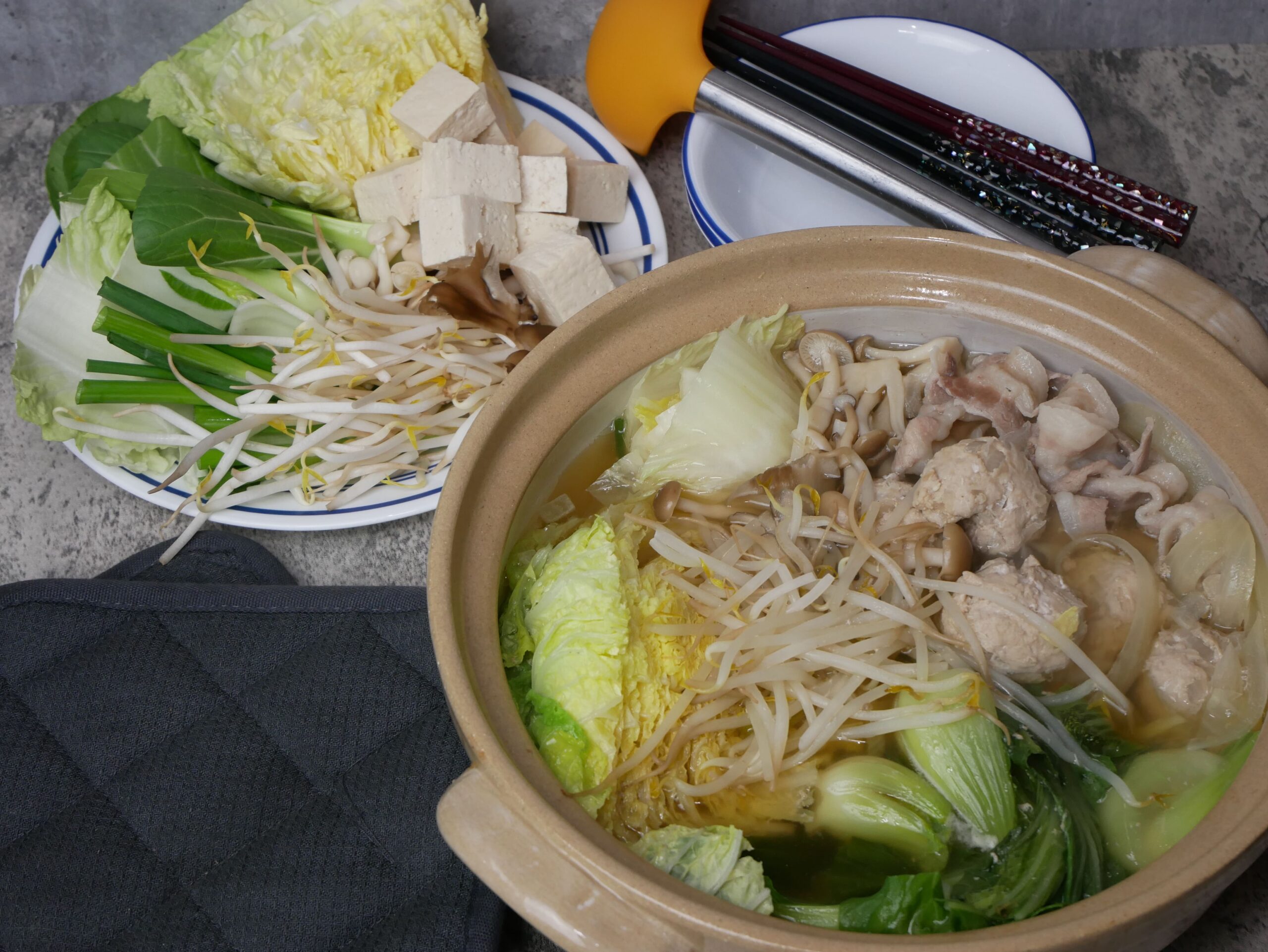
Leave a Reply
You must be logged in to post a comment.